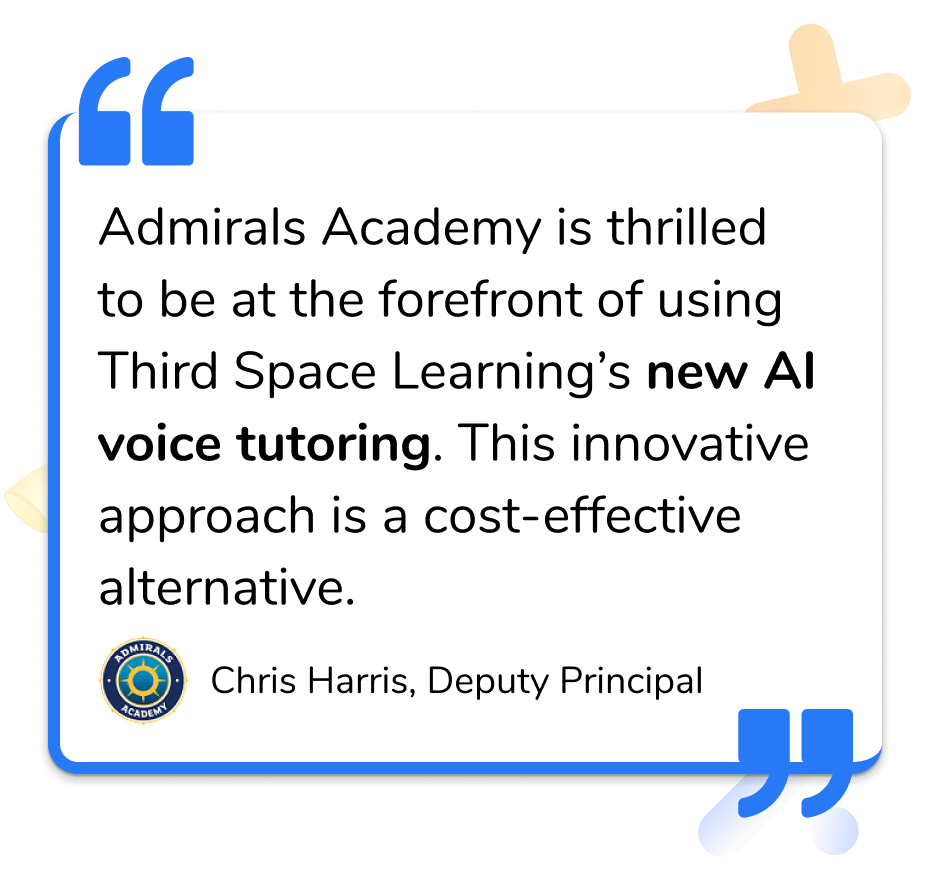SECOND GRADE MATH TUTORING
Build foundational skills in 2nd grade math early on
Second grade math students are beginning to move on from basic math skills and learn how to apply their knowledge to more complex word problems.
For some students, this can be a struggle without additional opportunities to practice the math concepts they struggle most with.
Ensure students reach academic success and gain confidence through personalized one-on-one online tutoring sessions with their own dedicated specialist tutor.

The students have loved the Third Space Learning tutoring program, it’s been really good. The tutors are lovely. All the kids at school want to do it now – they don’t see it as a catch up program!
Jayne Clark
Teacher
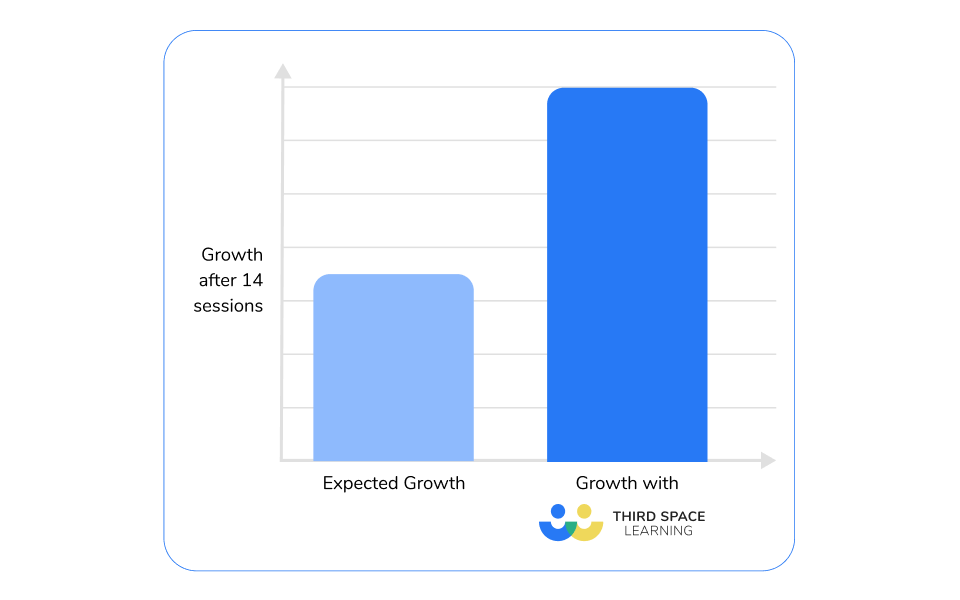
Benefits of 2nd Grade Math Tutoring
2nd grade math tutoring results in a greater impact than leaving it until middle school or even high school.
Starting second graders on a math tutoring program helps accelerate progress and understanding of math concepts before the achievement gap widens in later years.
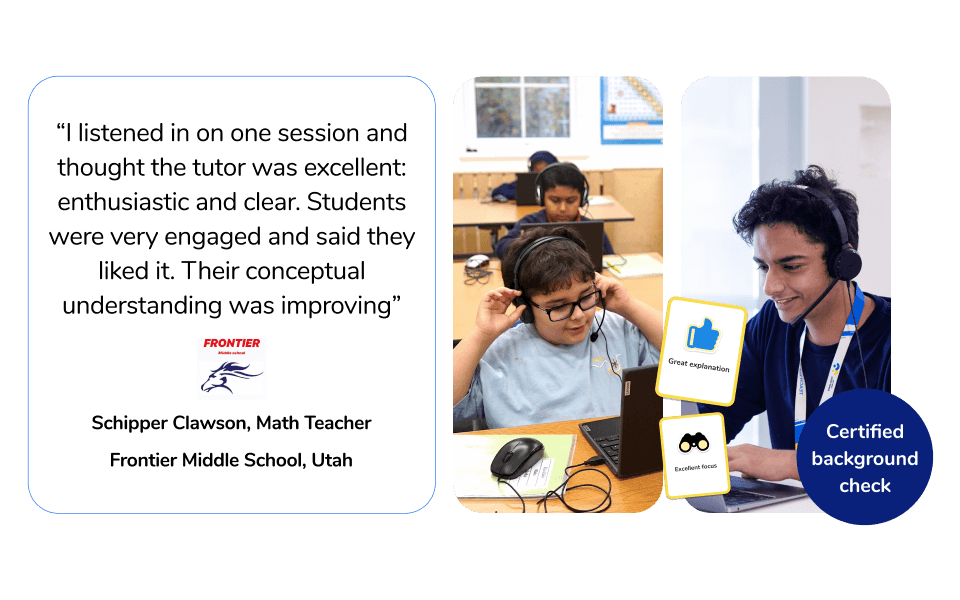
Develop critical thinking
2nd graders are developing their math skills, starting more complex problem-solving and beginning to explore word problems.
One-on-one online tutoring sessions provide extra math practice for second graders who are struggling to keep up with the pace of math lessons as they become more difficult.
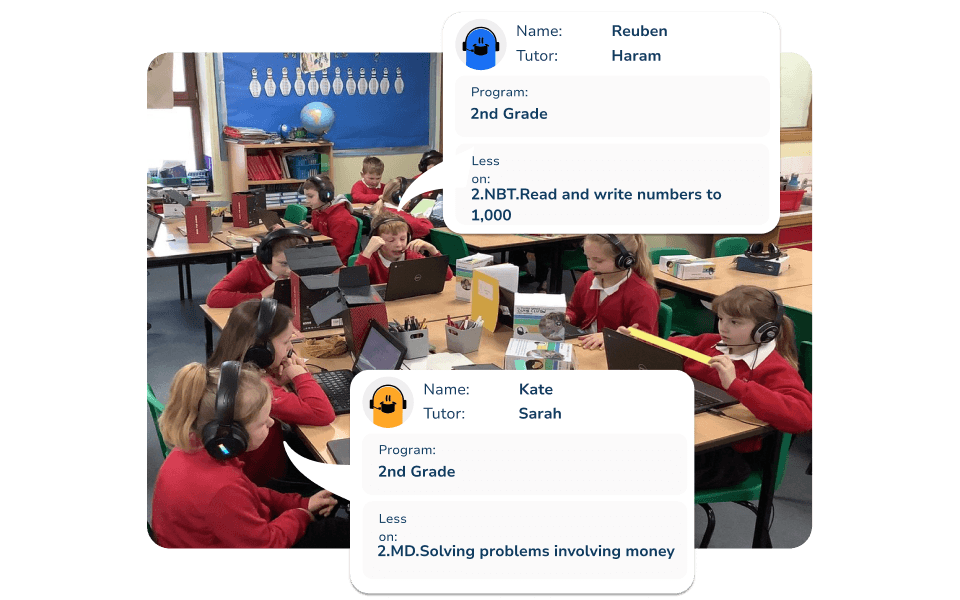
Personalized tutoring service
Not all second grade math students respond to the same teaching styles, differentiating instruction and work for 20 or more students can be challenging.
Each student works one-on-one with a private tutor who adapts instructions and math lesson content in real-time according to the student’s needs.
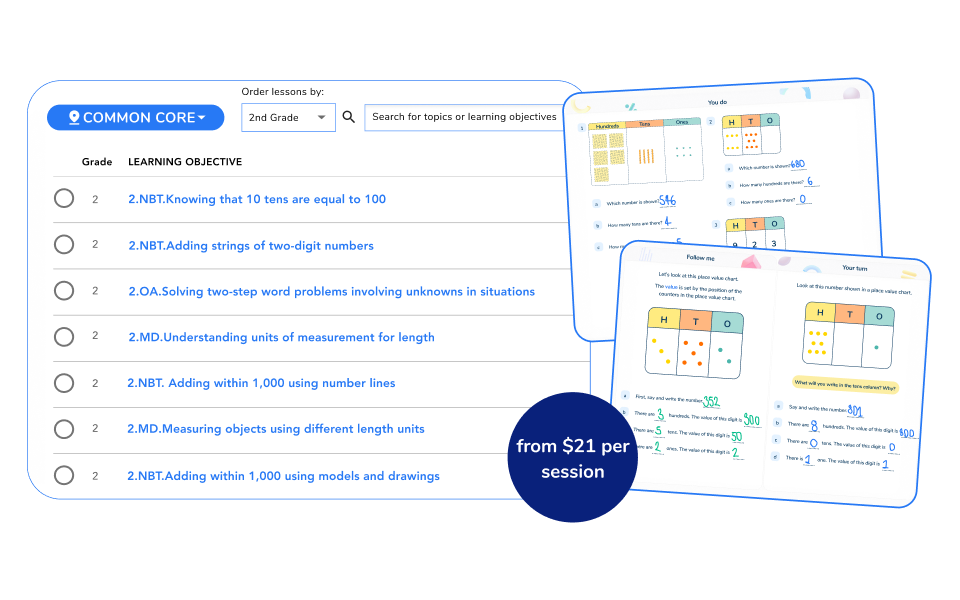
Expert 2nd grade math tutoring
All math lesson plans are created by a team of math experts and cover the 2nd grade standards for every US state standard and Common Core.
Third Space Learning tutors are all STEM specialists, it’s like bringing in multiple high-quality interventionists into your elementary school for 2nd grade math help – without the price tag.
Preview 2nd grade math tutoring lessons
Preview 2nd grade math tutoring lessons
Specially created lessons designed to build conceptual understanding and enable tutors to respond to students’ needs in real-time:
-
Example lesson 1
-
Example lesson 2
-
Example lesson 3
Understanding that a three-digit number represents hundreds, tens, and ones
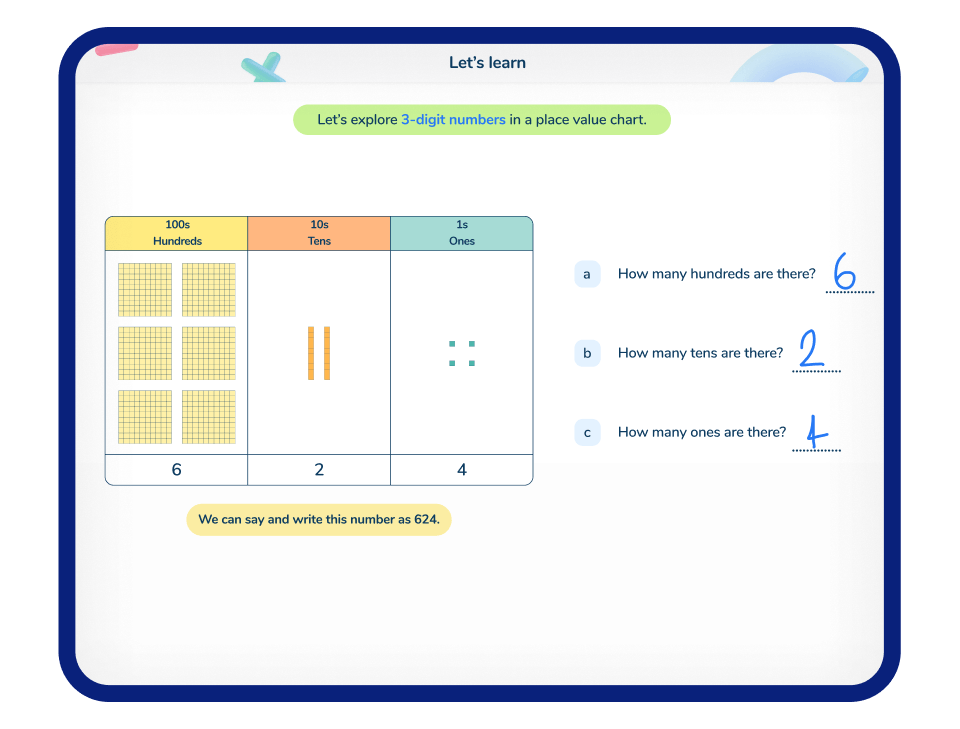
Let’s learn
The first question introduces each concept and helps students feel ready to learn
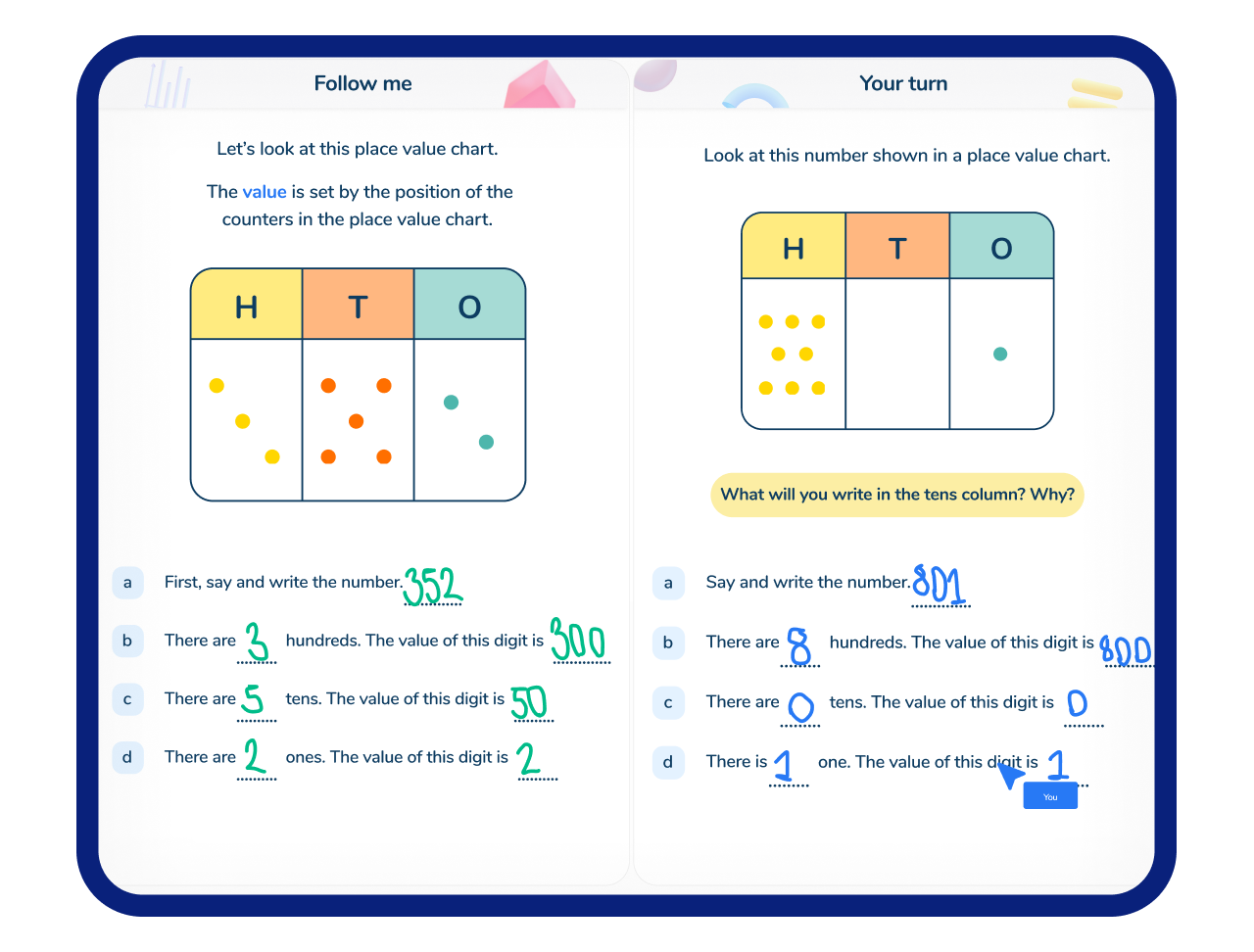
Follow me + your turn
Students work through a scaffolded example with their tutor before trying a similar question on their own
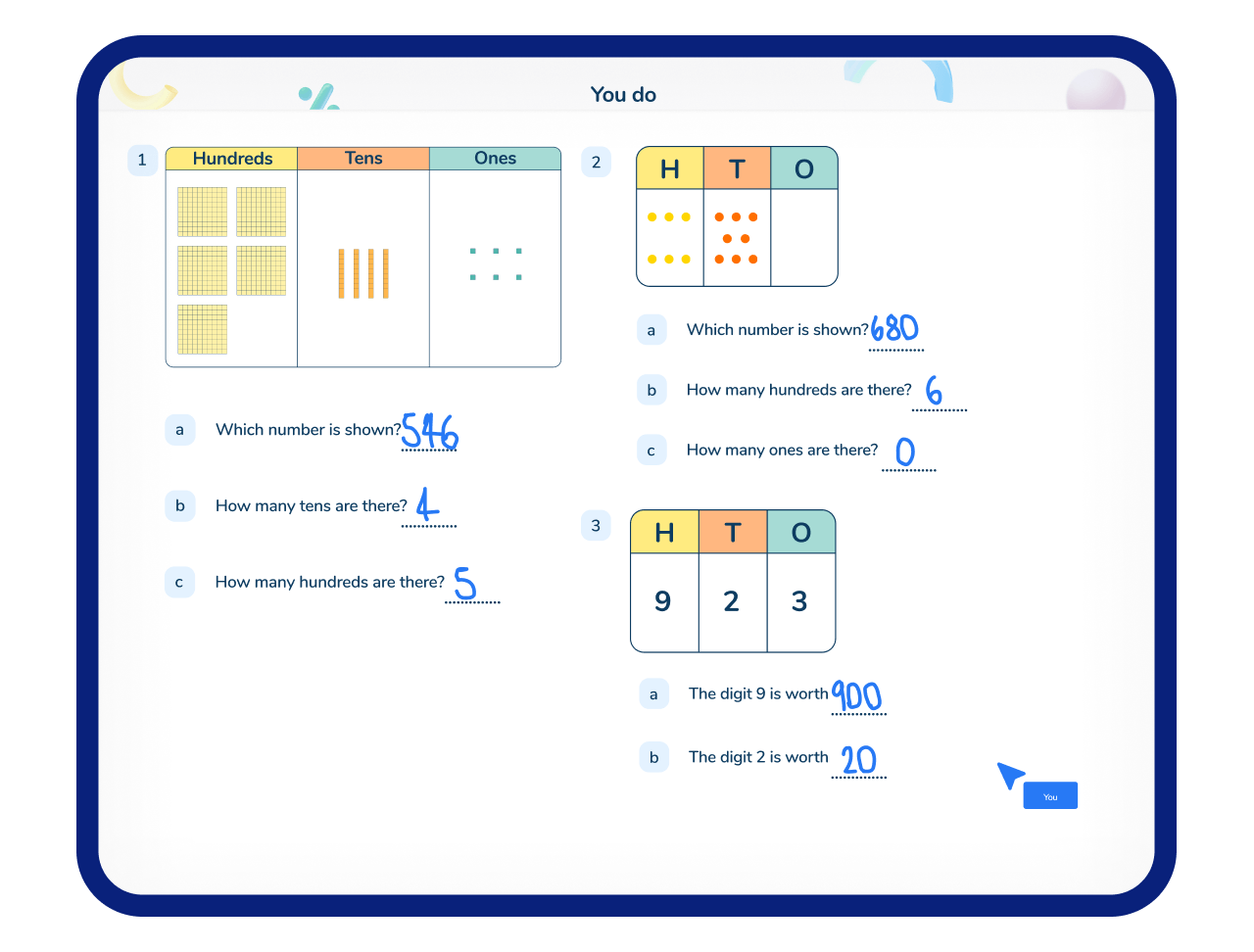
You do
A carefully sequenced next question ensures students can apply knowledge to different contexts
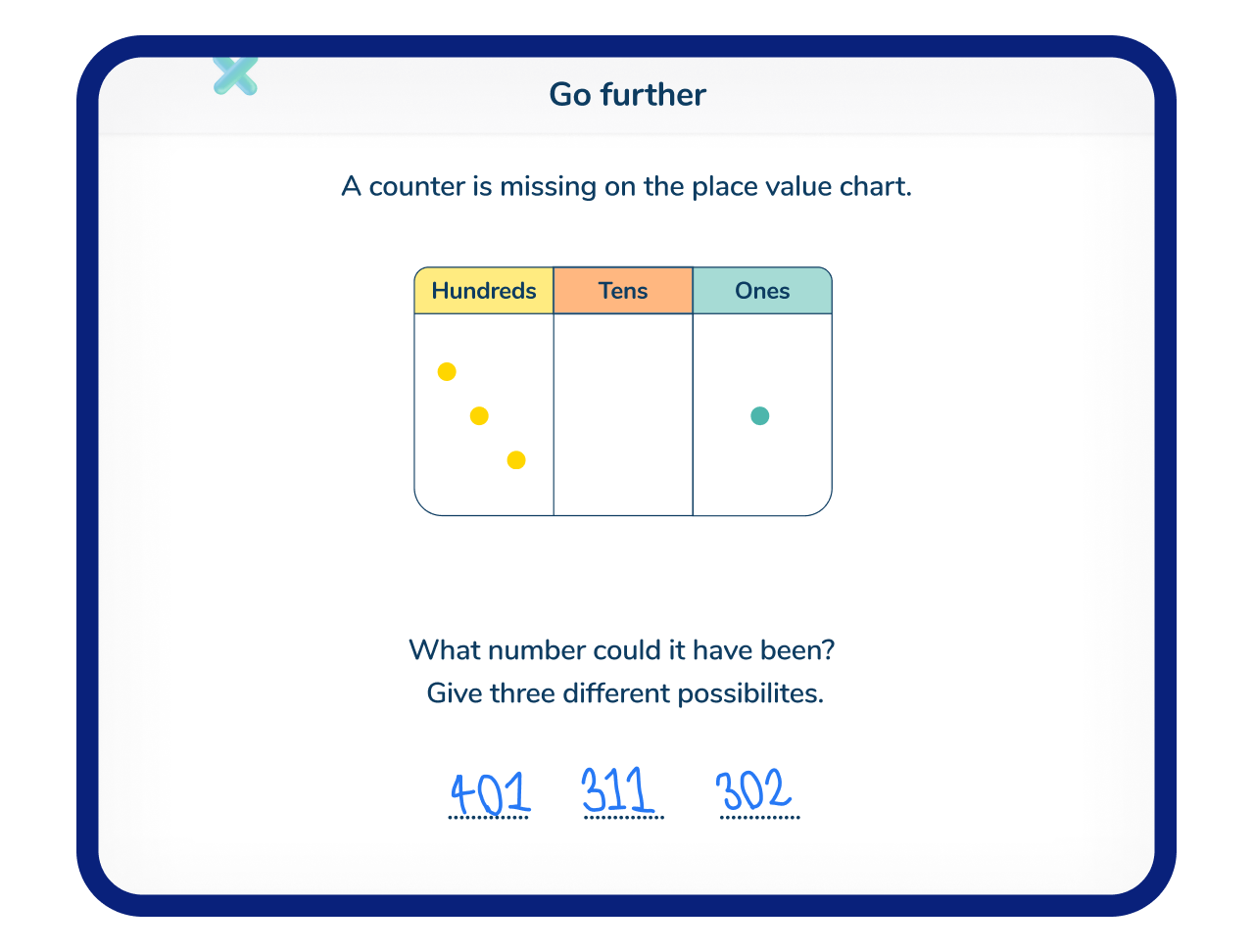
Go further
This gives students an opportunity to apply their knowledge to problem solving and reasoning questions
Knowing that 10 tens are equal to 100
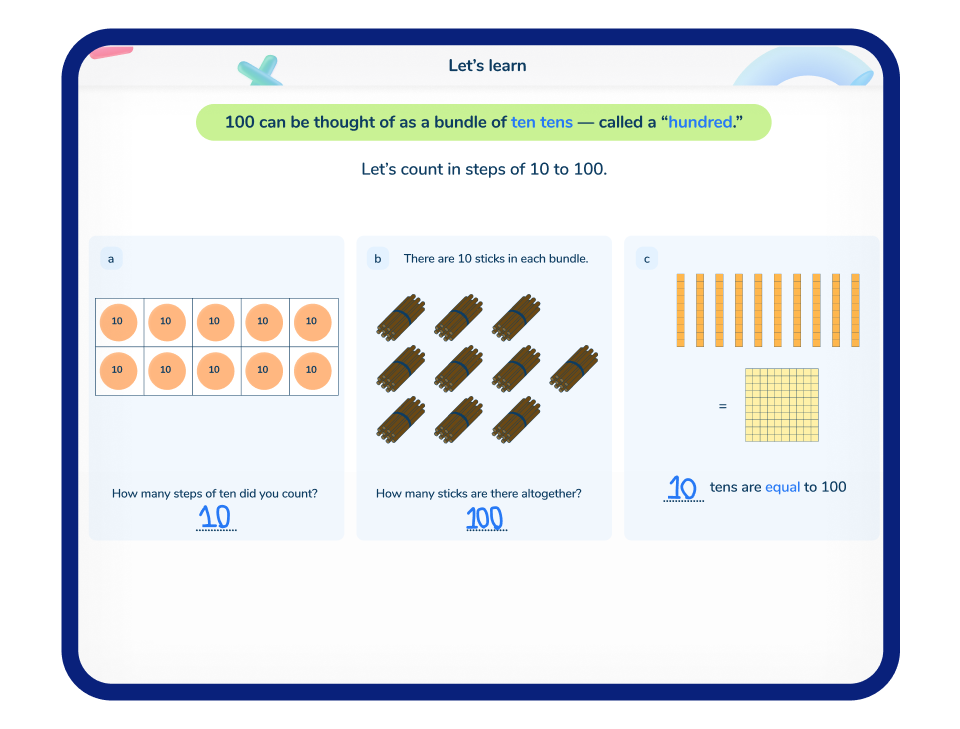
Let’s learn
The first question introduces each concept and helps students feel ready to learn
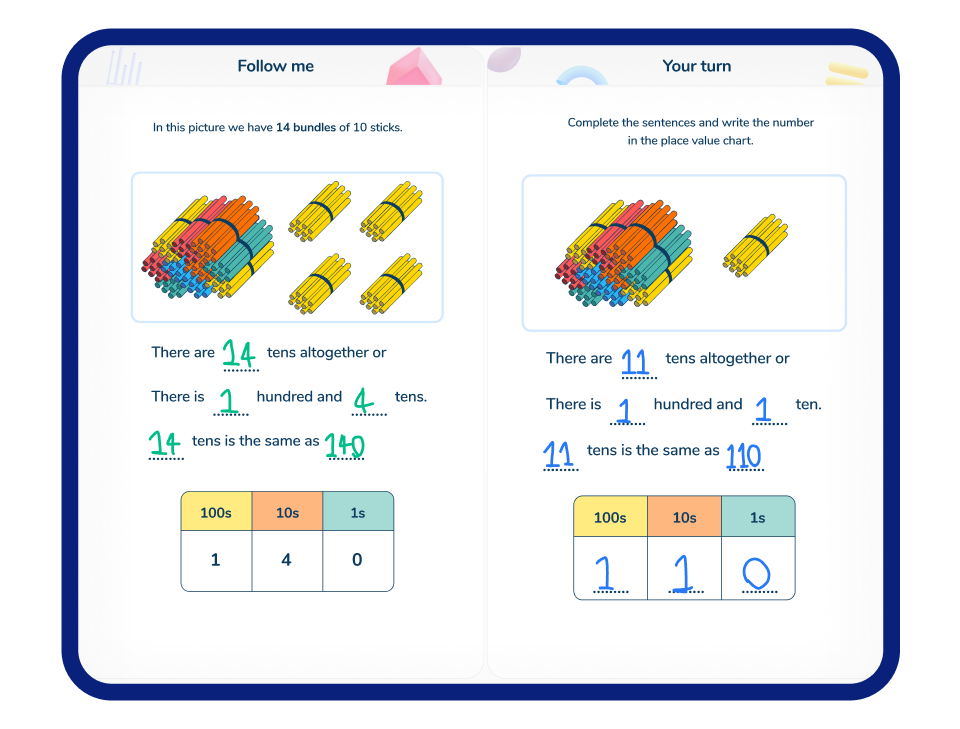
Follow me + your turn
Students work through a scaffolded example with their tutor before trying a similar question on their own
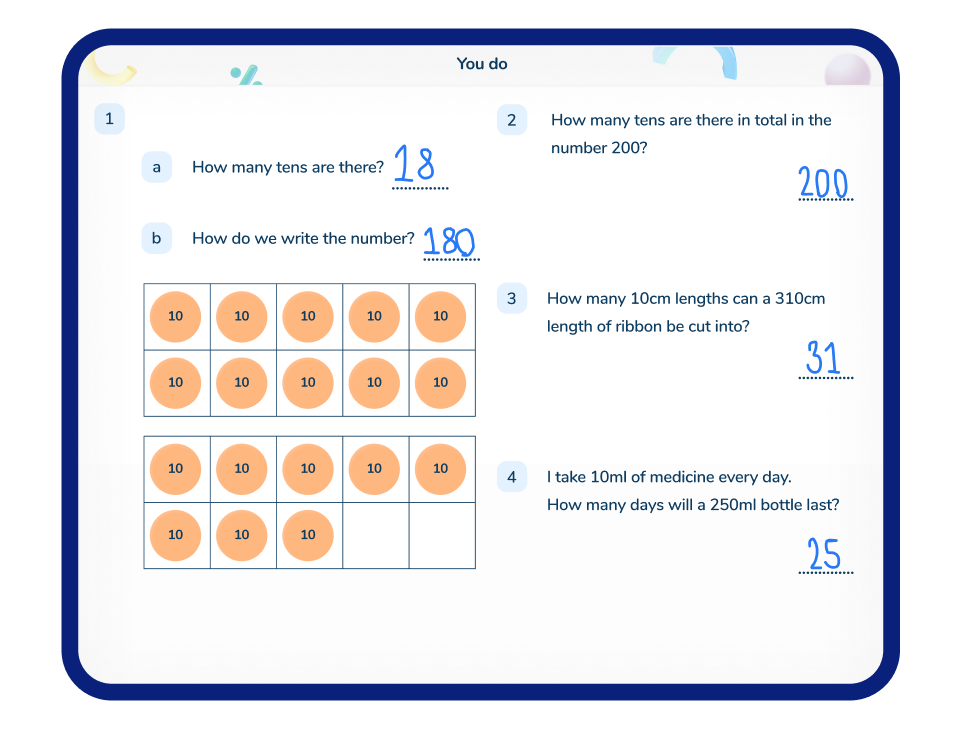
You do
A carefully sequenced next question ensures students can apply knowledge to different contexts
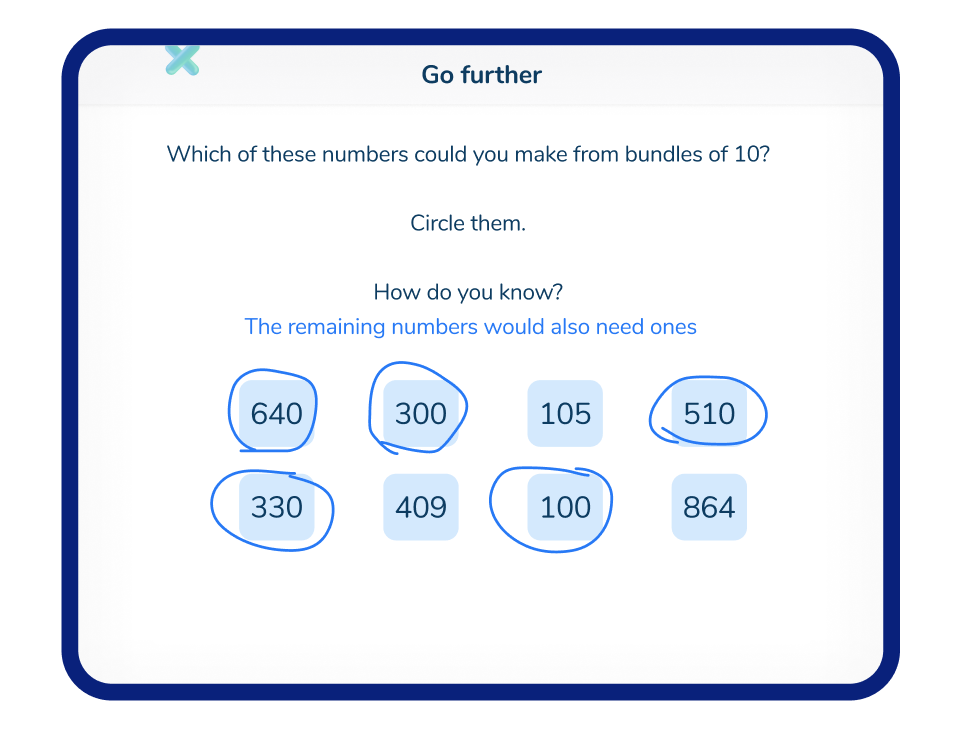
Go further
This gives students an opportunity to apply their knowledge to problem solving and reasoning questions
Counting a collection of coins

Let’s learn
The first question introduces each concept and helps students feel ready to learn
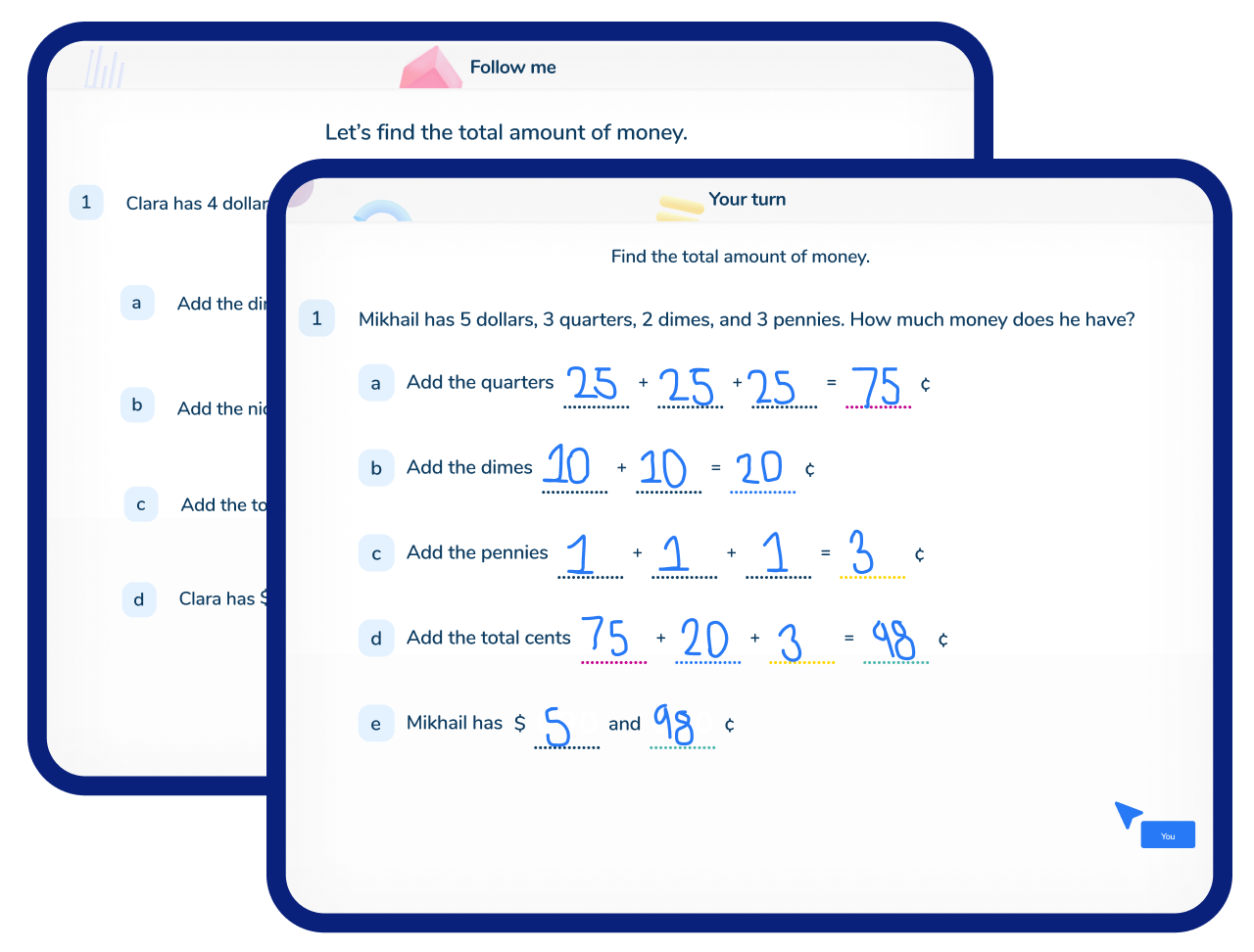
Follow me + your turn
Students work through a scaffolded example with their tutor before trying a similar question on their own
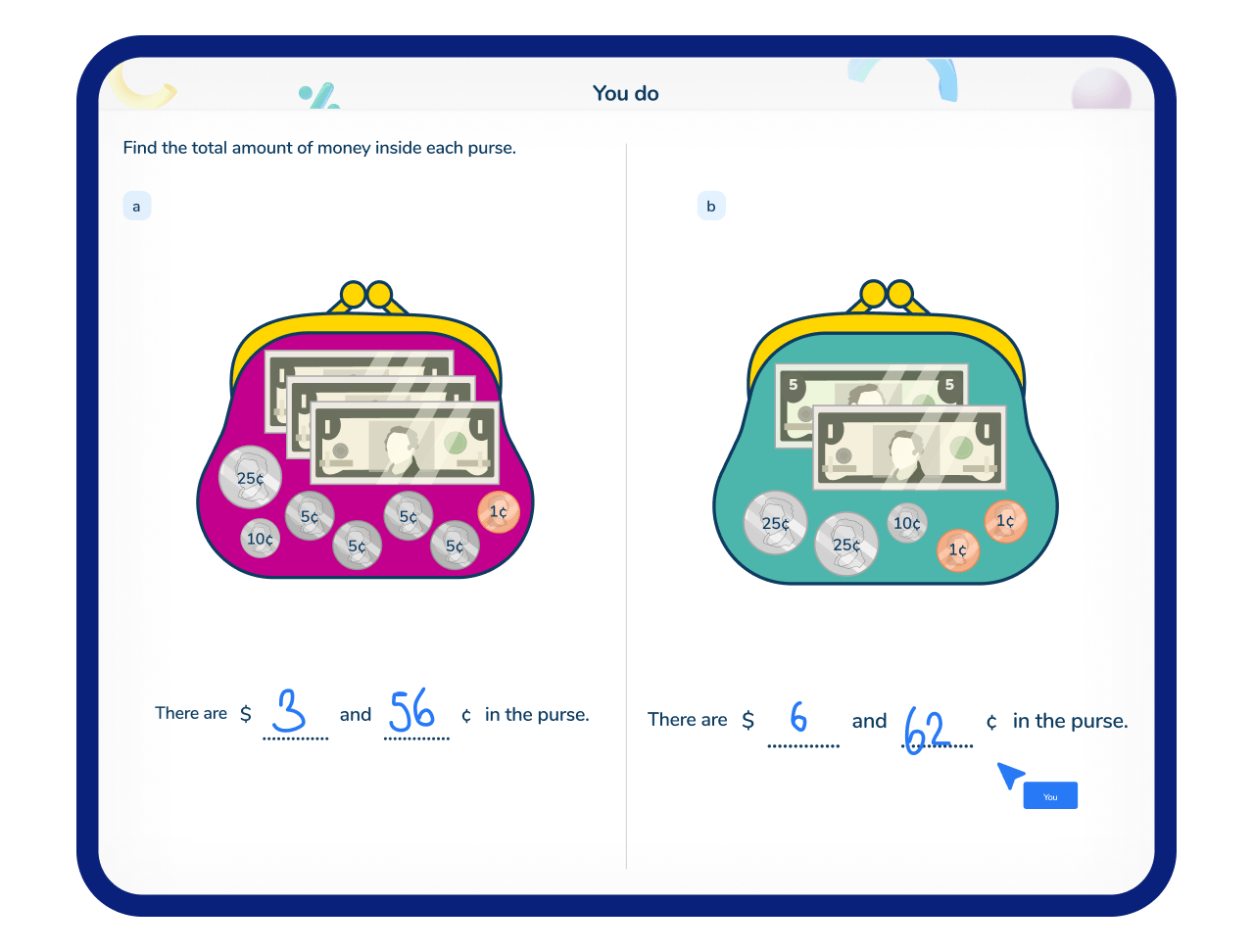
You do
A carefully sequenced next question ensures students can apply knowledge to different contexts
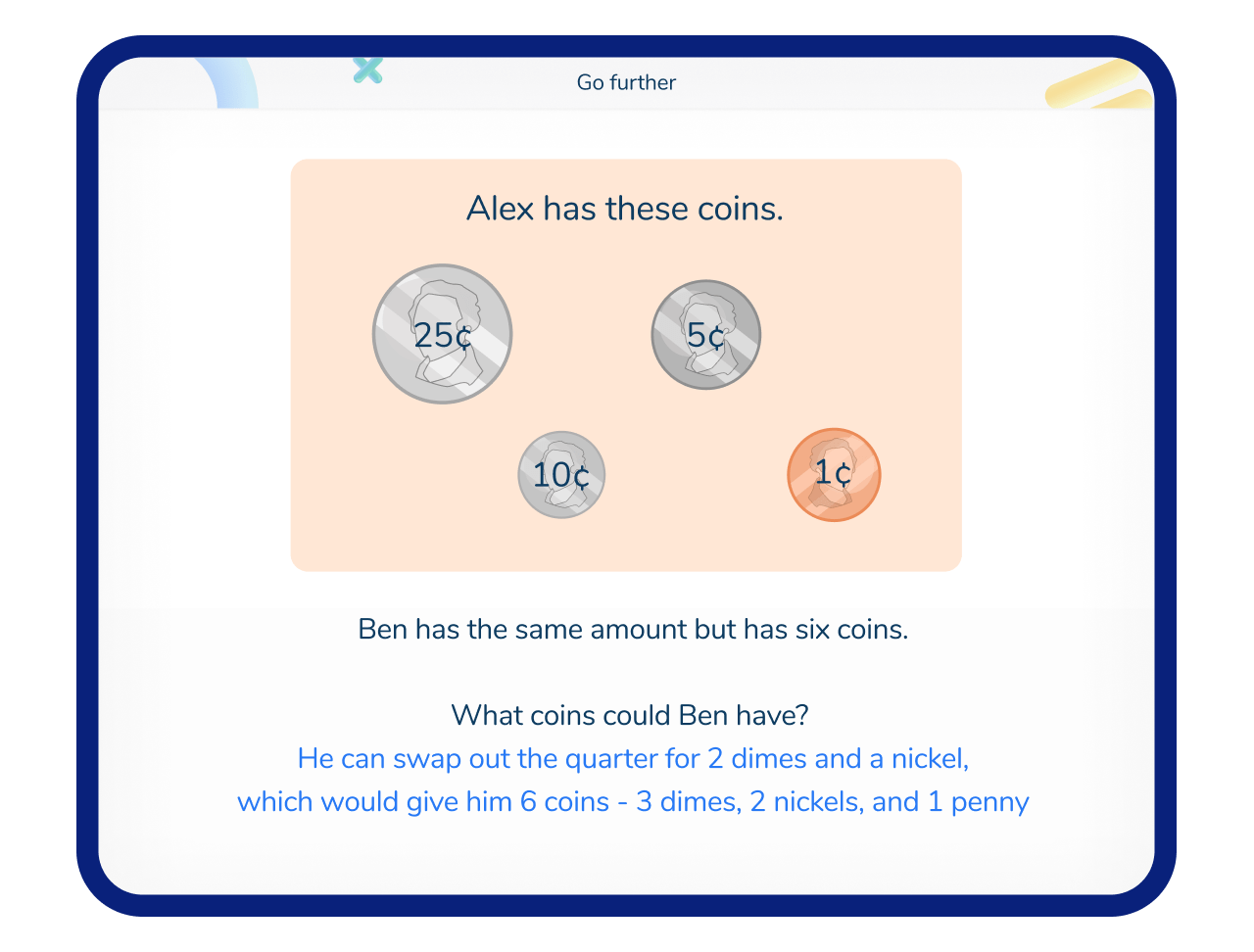
Go further
This gives students an opportunity to apply their knowledge to problem solving and reasoning questions
2nd grade scope and sequence
Whether you have students who would benefit from more opportunities to practice 2nd grade standards or who have existing gaps from 1st grade, we’ve got a program for your 2nd grade students.
Click on the program name to view the full scope and sequence.
Whether you have students who would benefit from more opportunities to practice 2nd grade standards or who have existing gaps from 1st grade, we’ve got a program for your 2nd grade students.
Click on the program name to view the full scope and sequence.
2nd Grade Program
Best for: Students with gaps from 2nd grade
Programme goal: Master 2nd grade standards
2nd Grade Program
Learning objectives covered in this program:
Third Space Learning lessons are available for all state standards and for Common Core.
Solving two-step word problems involving unknowns in situations
Adding within 20 using mental strategies
Subtracting within 20 using mental strategies
Even and odd numbers using visuals
Using arrays to show grouping
Understanding that a three-digit number represents hundreds, tens, and ones
Knowing that 10 tens are equal to 100
Counting within 1,000
Skip counting by 5s, 10s and 100s
Read and write numbers to 1,000
Comparing two 3-digit numbers
Adding 2-digit numbers
Subtracting 2-digit numbers
Adding strings of 2-digit numbers
Adding within 1,000 using models and drawings
Subtracting within 1,000 using models and drawings
Adding within 1,000 using number lines
Subtracting within 1,000 using number lines
Adding and subtracting 10s and 100s
Understanding units of measurement for length
Measuring objects using different length units
Comparing the lengths of objects
Solving problems related to length
Representing length on a number line
Telling and writing time to nearest 5 minute
Solving problems involving money
Drawing line plots with measurement data
Solving problems including picture graphs
Solving problems including bar graphs
Understanding shapes and their attributes
Partitioning rectangles into rows and columns
Partitioning shapes into equal shares
About this program
Lessons focus on securing 2nd grade standards to enable students to successfully move on to 3rd grade.
How are lessons ordered?
The default order has been set by our academic team to align with your state standards. Schools can pick one of our alternative sequences to re-prioritize domains, or send us their assessment data for us to pick the most appropriate sequence.
Want to speak to our friendly team? Book a call.
1st Grade Program
Best for: Students with gaps from 1st grade
Programme goal: Master 1st grade standards
1st Grade Program
Learning objectives covered in this program:
Third Space Learning lessons are available for all state standards and for Common Core.
Solving word problems: result unknown
Solving word problems: change unknown
Solving word problems: start unknown
Solving word problems: total unknown
Solving word problems: addend unknown
Solving word problems: both addends unknown
Solving word problems: difference unknown
Solving word problems: bigger unknown
Solving word problems: smaller unknown
Two-step word problems within 20
Solving word problems: adding multiple numbers
Using properties to add
Adding and subtracting with counting
Making 10 to add or subtract
Using the relationship between addition and subtraction
Understanding the equal sign
Counting within 120
Read and write numbers to 100 using base-ten numerals, number names and expanded form
Understanding a number as tens and ones
Comparing two-digit numbers
Strategies to add within 100
Strategies for adding 2-digit numbers
Adding and subtracting tens
Subtracting with exchanging within 100
Telling the time to hours and half-hours
Representing data
Shape attributes
Partitioning circles and rectangles
About this program
Lessons focus on securing 1st grade standards to enable students to successfully move on to 2nd grade.
How are lessons ordered?
The default order has been set by our academic team to align with your state standards. Schools can pick one of our alternative sequences to re-prioritize domains, or send us their assessment data for us to pick the most appropriate sequence.
Want to speak to our friendly team? Book a call.

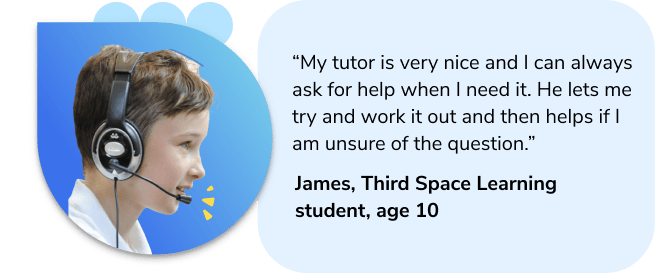
How it works in schools like yours
Personalized one-on-one online tutoring for multiple 2nd grade students at once, delivered by specialist math tutors at a day and time that works for your school.
Book a free tutoring demo for your school or district
Explore the online classroom, preview lessons aligned to your state’s standards and see for yourself why 4,000+ schools like yours have chosen high impact one-on-one math tutoring from Third Space Learning:
Proven to accelerate math growth in half the time
2.4x cheaper than the average cost of one-on-one tutoring
Scalable and easy-to-implement across multiple grade levels and schools
Flexible scheduling according to your school and district’s needs
You can learn more about how we keep your data safe and secure in our privacy policy.
Frequently asked questions
What math should a 2nd grader be doing?
In second grade, students build on the skills acquired in 1st grade math. 2nd graders develop basic concepts and explore new areas. Key math skills and concepts typically focused on in the second grade are:
Understanding Place Value: working with place value in three-digit numbers, recognizing the value of each digit in terms of hundreds, tens, and ones.
Addition and Subtraction: addition and subtraction within 100, learning strategies for adding and subtracting larger numbers and memorizing basic addition and subtraction facts to improve fluency.
Introduction to Multiplication: introduction of multiplication through repeated addition and array models.
Measurement and Data: measuring lengths using standard units (like inches, feet, centimeters, and meters), understanding and using time (hours, minutes), using money (counting coins and bills) and interpreting data using graphs.
Geometry: identifying and describing shapes (both 2D and 3D), recognizing and drawing shapes and partitioning shapes into equal fractions.
Problem-Solving Skills: Solving word problems that involve situations of adding to, taking from, putting together, taking apart, and comparing, with unknowns in all positions.
Mathematical Reasoning: developing explanations of reasoning and understanding the reasoning of others.
Fractions: learning about fractions as parts of a whole, particularly focusing on halves, thirds, and fourths.
What are the best practices for tutoring a second grader in math?
Tutoring a second grader in math is more than teaching math skills and concepts. Tutors should:
nurture a positive attitude towards math
build confidence
develop critical thinking skills
What is the Best Online Math Program for 2nd Graders?
Choosing the best online math program for a second grader depends on several factors including preferred learning styles, the specific math concepts they need to practice, and the level of engagement the program offers. There is no one-size-fits-all and programs should be chosen with individual students in mind.
